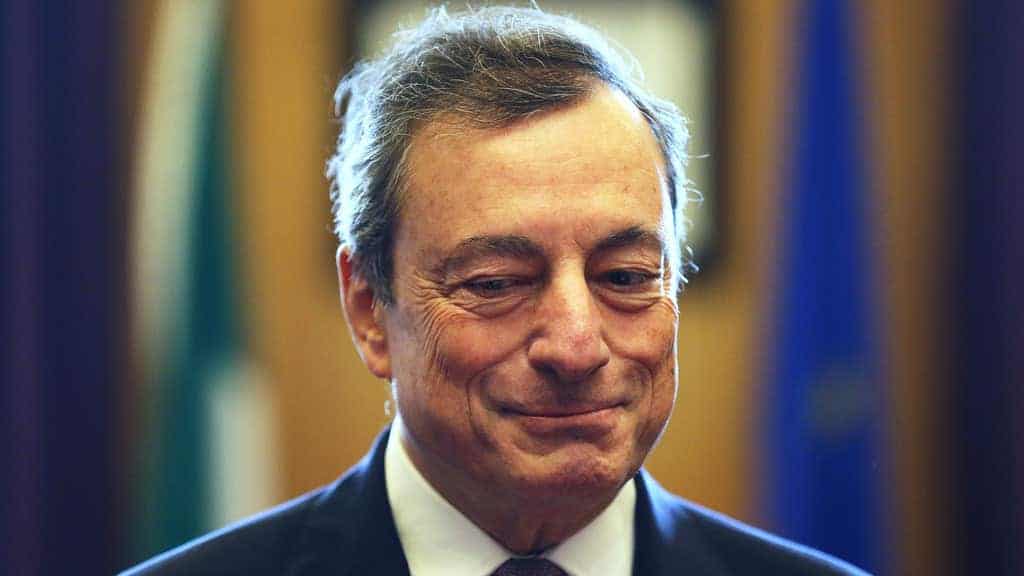Mario Draghi: Italy's chance to reboot its economy


The high-calibre personalities created to serve under Mario Draghi's new national unity government will need to compensate for time lost during the collapse of Giuseppe Conte's coalition recently. From the new ministers, one of the busiest will almost surely be Vittorio Colao, the former telecoms executive who'll now serve as Minister for Technological Innovation and Digital Transition. By getting Colao to reorient Italy's erratic method of the digital economy, Draghi is providing a clear signal of the requirement for an experienced professional to right the ship after consecutive populist coalitions.
The coalition headed by Conte collapsed primarily over concerns Matteo Renzi, leader of the small Italia Viva party, voiced concerning the previous government's plans for spending the EUR209 billion which Italy will get in Next-gen EU recovery funds in the Eu. At the end of January, Renzi finally pulled his support in the shaky, Five Star-dominated coalition, after Conte failed to convince him with a proposal redraft that lacked proposals for the concrete reforms Brussels expects to determine in exchange for the record stimulus package.
Unifying a divided ministry
Nor was Renzi the only person to have difficulties with Conte's method of handling what's nothing less than a historic chance to remake Italy. Vittorio Colao himself was summoned to Rome in April of this past year to go a task force charged with producing a plan for how the EU recovery funds could drive Italy's digital transition. Despite the fact Conte's government commissioned the project themselves, the six-point, 121-page plan was basically entirely ignored – among the final straws for Conte's haphazard tries to set reform and spending priorities during his final months in power.
One of Colao's first tasks will be the restructuring of a ministry whose organisational setup under his predecessors created as numerous problems as it solved. Underneath the previous government, the dual development of Italy's fixed broadband and 5G infrastructures was invested in two separate ministers, as the ultra-fast broadband committee, COBUL, was headed by another. Given that Italian telecoms experts are with the 5G network to become coordinated together with broadband, especially as the nation is constantly on the lag behind average EU connectivity rates, this arbitrary split in leadership did little to help Italy break into the 'digital decade' alongside the rest of Europe.
Pausing a problematic merger
While the unification of leadership can come as a boon towards the efficiency from the ministry, the opposite holds true for that structure of Italy's broadband market. One of the most pressing issues for Draghi’s government is to cope with the Conte government's make an effort to force through a tie-up from the private telecoms group Telecom Italia (TIM) and its broadband competitor Open Fiber.
Successive Italian governments took wildly different stances towards Open Fiber dating back to 2021, when the firm was initially devised by the government of then-PM Renzi in order to force TIM, the stagnant incumbent and former state-run monopoly, to compete in rolling out ultra-fast broadband across the country. The new company, founded like a partnership between your Italian government's sovereign investment fund (the Cassa Depositi e Prestiti, or CDP) and Italian energy giant Enel, has by all accounts been a convincing success. Within the last 5 years, Open Fiber has helped branch out fibre connectivity to no less than 8.5 million previously disconnected homes.
That success wasn't enough for Conte, and more especially for Conte's political backers in the Five Star Movement, who demanded Rome move instead to produce a 'national champion' by merging the two competitors right into a single network dubbed FiberCop – spearheaded by the same CDP that helped create Open Fiber just a couple years earlier. The mash-up has sounded alarm bells for consumer groups such as Altroconsumo and Euroconsumers, who penned instructions to European Commissioners Margrethe Vestager, Thierry Breton, and Paolo Gentiloni (Conte's immediate predecessor) warning of the change up the 'single network' project would have on Italian customers.
Pressure to accomplish the merger has shaped the broadband space, with Enel undertaking the process of selling its shares of Open Fiber to Australian fund Macquarie underneath the Conte government's watchful eye. Given Colao's own proposed digital recovery plan last year emphasised the requirement for universal fibre optic connections, the TIM-Open Fiber merger doesn't seem consistent with Colao's views, especially when TIM's long history of anticompetitive behaviour and sluggish investment are taken into consideration.
Designing a future-focused spending package
Instead of dedicating political and economic capital to such populist projects, Colao now has the opportunity to ensure a large part of Italy's Next-gen EU funds are earmarked for technological infrastructure to be able to reverse Italy's digital shortfalls, just as his proposal outlined. Conte's government, for example, proposed EUR4.48 billion for “technology transfer and innovation” in its draft proposal, a figure deemed far from sufficient by Italian trade association Asstel. According to the group's own estimates, the government will need EUR10 billion to pay for the broadband rollout alone.
As Draghi and Colao revisit Italy's proposal for spending EU funds, they'll likewise be able to integrate other elements of Colao's proposed reforms which were absent in the Conte draft. Key suggestions included binding conditions on invariably winners tenders, internet cabling of all public buildings to facilitate the transition to digital services and smart working, the adjustment of electromagnetic emission levels in Italy to European values, and subsidies for broadband access for lower-income Italians.
While surely not the outcome he'd in mind, Conte's decision to create Colao towards the task this past year provided him, at least, having a healthy head start. Seven months after his task force's proposals for an overdue Italian digital transition were ignored, Colao will possess a prominent seat at the table in deciding how Italy's stimulus funding is going to be allocated.






